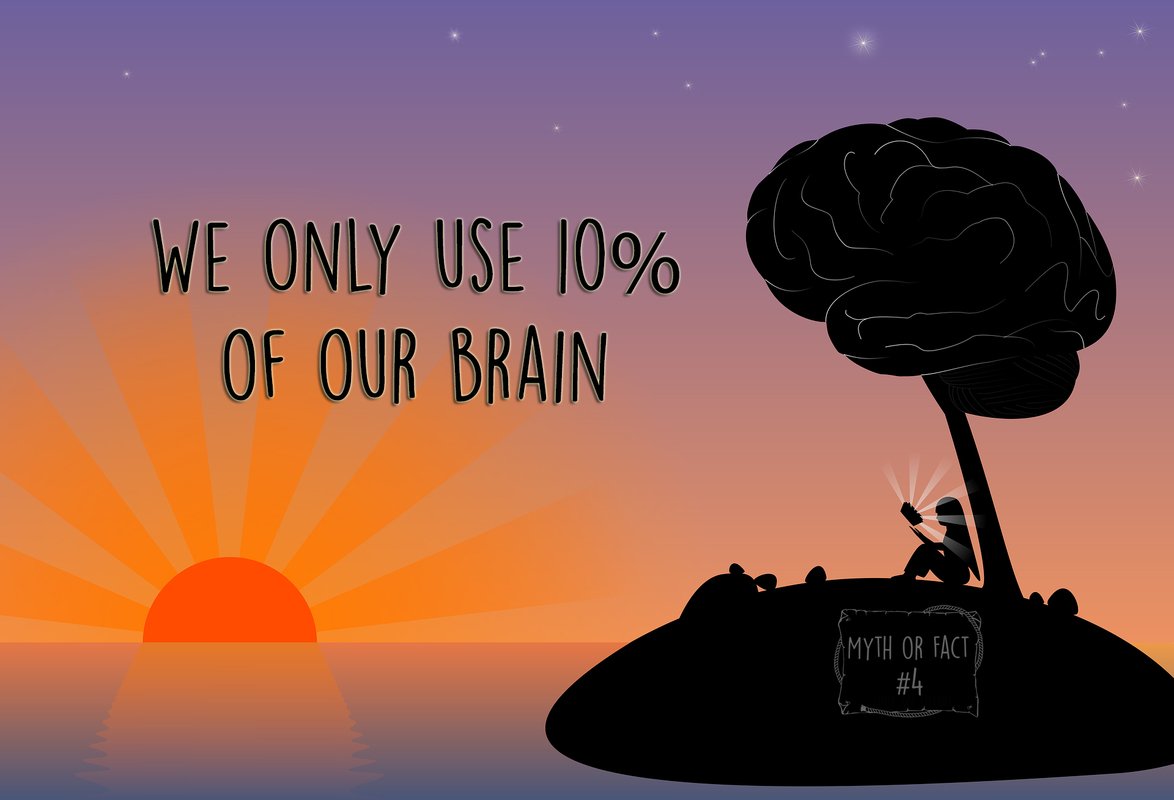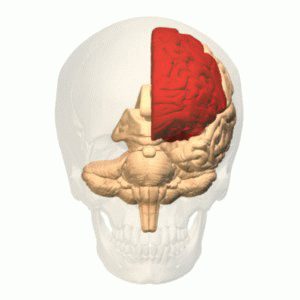
The human brain is responsible for the way we act and think, that’s what most of us know. On the other side we yet do only know little about the brain, there are many open questions scientists try to answer. You might have seen the movie “Limitless” or “Lucy”. Both explain that humans only use ten percent of their brain and the other ninety percent are idle, not used at all. If we however were able to use more than just ten percent of our brain we would have a significant increase of mental performance.
Is this true? Is our brain almost unused and can we change this to improve our lives? We will investigate this myth and show if it is whether fact or fiction.
A quick introduction to the brain
The brain is located in the skull and is covered by a cerebral membrane. With a mass of only 1.4 kg it’s relatively light and compared to the body's total weight it makes only two percent of it. While the mass takes only two percent the energy consumption takes around twenty percent of our complete energy usage. Together with the spinal cord the brain forms the central nervous system. Perception, memory, coordination of the body and many other important functions are regulated by our brain, similar to a control center. In order to be able to receive and process information our brain is made of blood vessels and billions of neurons. The following illustrations shows the general structure of the brain which can be divided into two, left and right, hemispheres.

Fig.1 Animation of the human brain. Credits
Nature is pretty clever. In the course of evolution the brain developed to a high functional organ which made it possible to distinguish us from other organisms. The evolution of our brain followed the state of lowest energy in order to perform economically. Like mentioned the brain consumes about twenty percent of our total energy. If the brain uses only ten percent it does mean that the other ninety percent are actually unfavorable or to put it into other words: waste. Evolutionary it doesn’t make sense to build such a large area without a function. And here we come to the answer to our question. The human brain uses its whole capacity and not only ten percent. Let’s have a look at why this is the only logical way.
Different regions – different procession
As mentioned we use our brain completely. Certain regions of our brain perform different functions, these regions spread all across the complex organ. A little example of where certain tasks are located can be found on the picture below.

Fig.2 Functions of different brain regions. Credits
What does that mean to us? Whenever we do a certain activity different regions are used. We might not use all regions at the same time but generally we do use our completely brain and not only ten percent of it. If we would contentiously use all brain regions simultaneously, we definitely would have an overload of information we could not process. In a recent post I explained how we can detect certain regions that are responsible for specific functions. One way to display active brain areas is the functional magnetic resonance imaging (fMRI). It uses the technique of MRI and is able to detect refined distinctions in blood flow. When a brain region is active more blood flows. With help of the fMRI it is possible to see what region is activated when we are happy for instance.

Fig.3 fMRI scans of the human brain. Credits
Recent studies showed that regions that are not used can adapt their functions to those of similar regions. Scientists found out that the regions for sight of blind people just changed and took different functions. The phenomena that our brain can change is called neuroplasticity. Simplified one can say that habits cause our neurons to build paths. Every time we do a certain activity this connection between the neurons becomes stronger. The older we become the stronger these neuronal connections. Relearning things is just because of this fact hard to most of us because our brain uses the most “comfortable” path and building new connections is unfavorable. So when someone tells you, you are too old to change your habits: it’s not true. Is just becomes harder. There is a point I want to add to the fMRI images. It might seem that only the colored region is active. This is only partly true. The brain is always active but the regions that are not in use are in standby, however register signals. They are not marked because their value were set to 0 as a reference.
This was just another myth we uncovered. We use our complete brain and not only ten percent.

I hope you enjoyed this episode of Myth or Fact. The next one will follow tomorrow.
-Tim
Source of experiments:
Visual Cortex Activity in Early and Late Blind People
